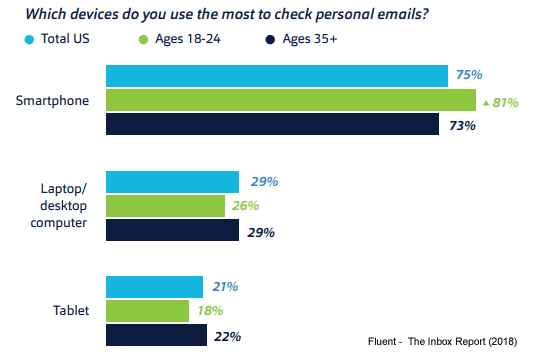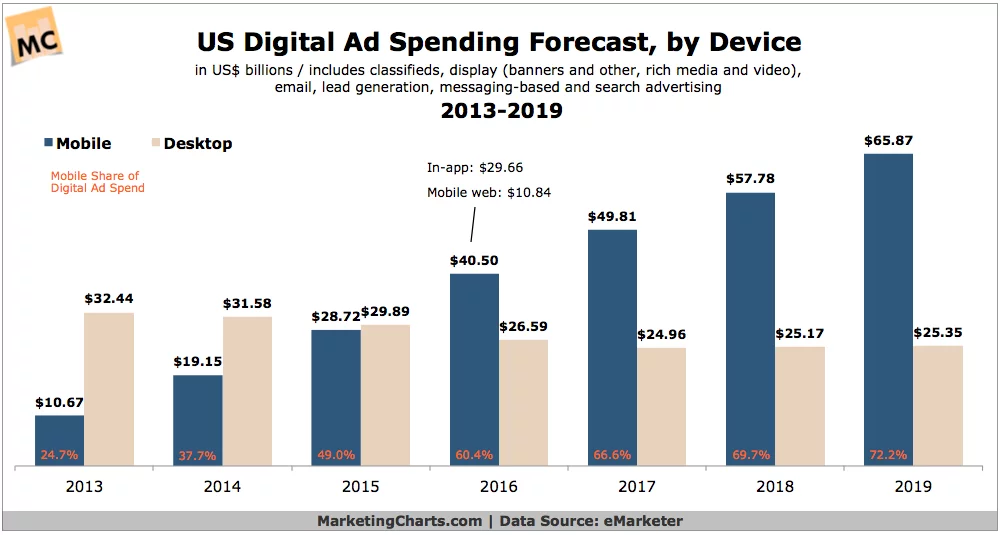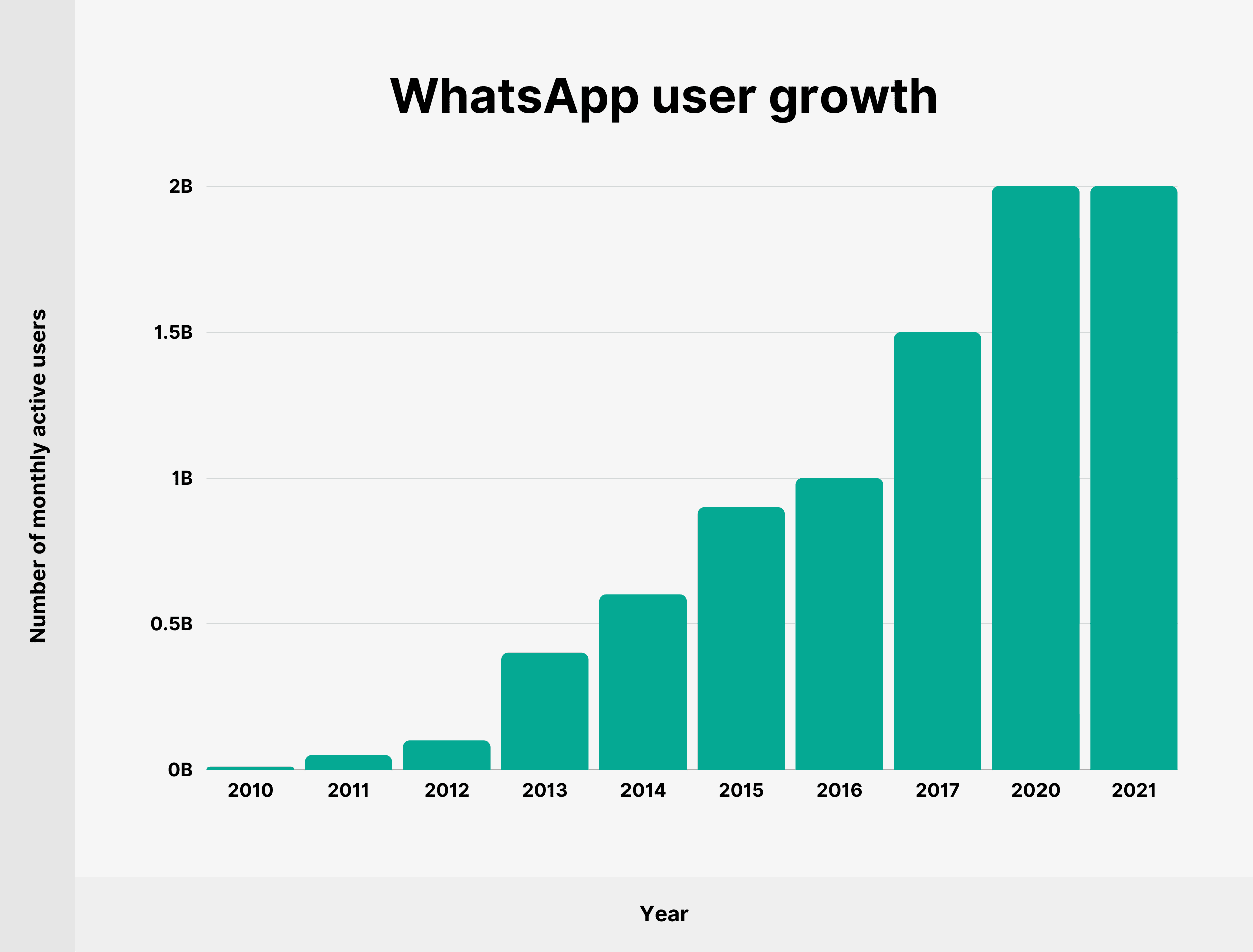Mobile phone usage statistics show that most people prefer using their smartphones for reading, browsing the internet, and many other activities. This is why it is common to see people with their phones everywhere they go.
There are several advantages mobile phones offer that make them the people's choice. For example, they are easy to move around with, giving people easier access to the internet and social media. Also, people can manage online business more efficiently on the go with mobile phones.
As a business person or a B2B marketer, you must know how to take advantage of your mobile device for your business. Reading more about the benefits they offer your business can teach you a few things about mobile phone usage.
This article discusses some valuable stats about mobile phone usage for marketing that business owners and marketers would love to read. This knowledge will help to reshape your business plans and reach your target audience.
Key Mobile Marketing Statistics
- In 2020, the size of the global mobile marketing market was estimated at 11 billion U.S. dollars, and the source projected that it would reach 57.85 billion dollars by 2030
- In 2021, mobile advertising spending reached a record 288 billion U.S. dollars worldwide.
- Researchers estimate that by 2023, worldwide mobile social media advertising spending will lay around 141 billion U.S. dollars, making it the biggest form of mobile advertising spending. Mobile banner ads rank second with around 128 billion in spending, followed by search and video advertising spending.
- In 2019, the U.S. was the largest global market based on mobile advertising spending. China ranked second that year, with expenditures on mobile ads valued at approximately two-thirds of those reported in the United States.
General Mobile Marketing Statistics
1. There were 5.27 billion unique mobile users in the world as of 2021.
(We Are Social)
According to statistics from We Are Social, the world had a total of 5.27 billion unique mobile users in 2021. As of April 2021, the world’s population was 7.85 billion. This implies that over 60% of the world's population uses at least a mobile phone. Among these mobile-phone users, 4.72 billion use the internet. This is also over 60% of the world's population.
2. On average, U.S. adults spent three hours and 23 minutes per day on mobile devices in 2018.
(Statista)
In 2016, U.S. adults spent 22 minutes checking their phones, from replying to emails to catching up on friends and everything in between. Interestingly, these numbers has increased tremendously since then.
This implies that people depend more on these mobile device for many activities. In fact, marketers and consumers use their mobile devices more daily. This is because mobile marketing thrives more as people spend more time on their mobile devices.
3. Mobile data traffic worldwide was predicted to increase seven-fold by within five years (2017-2023).
(Cisco)
To access the internet, most people depend on their mobile data. However, a few use Wi-Fi to access the internet. According to Cisco's Global Mobile Data Traffic Forecast, mobile traffic's compound annual growth rate (CAGR) may reach 46%. This will also make connection speeds three times faster by 2023. By 2023, Wi-Fi speeds would have grown from 30.3 Mbps in 2018 to 92 Mbps.
4. Mobile phones generate 70% of web traffic.
(Blue Corona)
Over half of the internet traffic is from mobile phone. Hence, any successful mobile marketing campaign must have mobile-friendly content. The main priority should be on mobile phones, after which, desktop can come next. This is because there were 4.32 billion active mobile internet users in January 2021. Note that Mobile-friendly contents are always short and sweet.
5. In 2019, 16% of U.S. internet users used a mobile phone majorly to access websites.
(eMarketer)
In 2018, the Mobile against desktop usage stats in the U.S. revealed that the mobile-only audience would increase to 55.7 million by 2023. This is approximately a 19% increase. Adweek also revealed that 79% of smartphone users keep their phones on or near them for about two hours a day. More people will no longer use desktops and will move on to mobile devices in the nearest future.
6. Mobile video internet advertising is predicted to experience rapid growth in the coming years, with expectations to evolve from $3.5 billion in 2015 to $13.3 billion in 2020.
(Statista)
According to their report in 2018, 84% of digital marketing professionals planned to increase their budget on mobile video campaigns. As of 2020, the mobile advertising budget had a record of $223 billion worldwide. This figure will be over $339 billion by 2023 and will double by 2025. This shows how mobile technologies have been interwoven into digital infrastructure and individual lives today, and even more in the coming years.
7. The conversion gap between a desktop and a mobile device is 270%.
(Smart Insights)
According to the Mobile against desktop usage stats from Smart Insights, the conversion gap between a desktop and a mobile device is 270%. However, with new innovative ways to use mobile devices, the divide will likely become narrower in a few years. The stat also showed that desktop internet usage reduced from 54.86% to 48.88% within a year, while mobile users experienced an increase from 37.38% to 47.59% in 2021.
8. Four out of five consumers use smartphones to shop.
(Comscore)
According to the study, four out of five mobile users shopped on their devices in July. Amazon Sites had the highest audience of 49.6 million visitors, followed by multi-channel retailers, including Apple, with 17.7 million visitors. Wal-Mart had 16.3 million visitors, Target had 10 million visitors, and Best Buy had 7.2 million visitors.
Most people believe shopping on their phones is an easy way out. It allows using your phone for other things and shopping simultaneously. Shopping on the phone also saves time, energy, and money.
9. App revenue hit $111 billion in 2020.
(Business of Apps)
The Mobile app revenue growth has been very rapid from year to year. Its growth in 2020 was almost 50% compared to the earnings in 2018. Q4 of 2020 generated the highest amount at $31.9 billion. It was followed by Q3, Q2, and Q1 with $28.9 billion, $26.9 billion, and 23.3 billion, respectively.
This has a way of generating a considerable amount of money in revenue for Apple, Google, and a lot of mobile app developers.
10. Since 2016, Google has maintained a“mobile-first” indexing policy.
(Hextract)
In 2016, Google originally introduced mobile-first indexing to prevent issues caused by websites with different mobile and desktop versions. Google used the desktop version of a site for crawling, indexing, and ranking before implementing the change.
In an age where the mobile-first approach to a web experience is vital for SEO and website owners investing in responsive designs, it is surprising that the internet still has some non-responsive websites.
11. Predictably, the number of mobile devices will reach 16.8 billion in 2023.
(Statista)
Mobile devices are gaining more popularity as the years go by. In 2021, active tablet users monthly were estimated to reach 64.8% of the total population. Apple has been the leading vendor of tablets worldwide; about 9.67 million of iPads were sold in the fourth quarter of 2018. This shows that the mobile market is incredibly increasing.
12. In 2020, there were 75% subscriptions for mobile broadband internet worldwide.
(Statista)
Out of every 100 inhabitants of the world, there were 75 mobile broadband subscriptions. Europe had the highest rate with 99.9%, according to mobile statistics. This is due to the introduction of broadband Internet access to the mass market.
The telecommunication industry experienced rapid change by improving speed and accessibility. In 2020, the number of wired broadband subscriptions was about 1.18 billion connections worldwide, from 220 million connections in 2005.
13. 75 out of 100 people in the U.S. open emails through their smartphones.
(Blue Corona)
Over 50% of consumers read their email on the move, and 75% of Americans use their smartphones most to check email. In order to succeed in marketing efforts, It is crucial to optimize emails for mobile devices and invest in responsive designs. According to Mobile marketing statistics, 80% of customers delete emails that are not optimized for mobile devices.
14. The average U.S. adults check their phones 14 billion times a day.
(Deloitte)
In 2017, smartphone penetration was 82%, with people between the ages 18 and 24 having the highest penetration at 93%. According to Mobile usage stats, it is becoming almost impossible to stay with the phone for a whole day.
This mobile device has become a significant part of our everyday lives. According to a survey carried out by Deloitte, users are consistent in the number of times they look at their phones per day, which shows they have formed a habit of doing it over time.
15. In 2017, 80% of Alexa Top Sites were mobile-friendly.
(Mobiforge)
According to the Alexa Traffic Algorithm, Alexa Tops Sites, an Amazon mobile site, ranks as a high-performing website. It is clear from these figures that in 2017, out of the top 100 sites, 80 had been optimized for mobile. This is also true for 90% of the top 10 sites. Therefore, a mobile-optimized website is a meaningful way to enable your site to perform well.
16. People spend over 80% of their time using a mobile device on apps.
(Smart Insights)
With 77% of online presence in the U.S. spent on mobile, mobile-optimized marketing is a must. Apps provide quality content and an interface that is easy to navigate. This is why users love to spend most of their time on their favorite apps. They spend the rest of their time (20%) on their mobile web browser.
17. 72% of U.S. digital ad spending is on a mobile device.
(eMarketer)
According to Mobile marketing stats, ads targeted at mobile users are more effective. Marketers are aware that their consumers spend most of their time with their phones. This is why they have started investing their time and effort into mobile ads to stay relevant in the industry.
18. In 2020, the average download speed on mobile was 34.82 Mbps.
(Statista)
In 2020, the average upload speeds on mobile devices were 10.99 Mbps. When it became fixed broadband, the download speeds were 84.33 Mbps, while uploads were at 44.10 Mbps. In May 2021, the average download speed globally for mobile internet increased to 54.53 Mbps, while the average mobile upload speed became 12.63 Mbps. These were significantly higher for fixed broadband.
19. Mobile data traffic worldwide would reach 77.5 exabytes per month at a compound annual growth rate of 46% in 2023.
(Statista)
As of 2018, global mobile data traffic was 19.01 exabytes per month. By 2023, mobile data traffic was predicted to be 77.5 exabytes per month worldwide at a compound annual growth rate of 46%. In North America, mobile data traffic reached 1.8 exabytes per month as of 2018. In 2023, traffic from mobile devices like smartphones, laptops, tables, M2M connections, and non-smartphones was predicted to reach 5.85 exabytes per month.
20. 92% of millennials, 85% of Gen X, and 65% of baby boomers own a smartphone.
(Pew Research)
Younger people rely more on smartphone technology compared to older ones. The Reverse is the case for tablets. 64% of Gen X has a tablet, whereas only 54% of millennials and 52% of baby boomers own a tablet. This is because some people see a phone as a versatile communication device, while most people use tablets purely for entertainment.
Interesting Mobile Marketing Statistics
21. In 2020, GIPHY usage increased by 33%.
(Medium)
Many people adopted the use of GIPHY to pass the time during the COVID-19 lockdown. According to the April 2020 data, GIF usage increased from 3% to 30% between March 2020 and April 2020. This also gives GIPHY a new look into how the nation felt during the unprecedented times.
22. 52% of voice assistant users use the technology every other day.
(National Public Media)
Many people are now running to voice tech as the number of smartphone owners in the U.S. keeps growing. Before the COVID 19 pandemic, the utilization of this technology was lower by 6% of its current usage rate, but now, it is gradually becoming a part of our everyday activities. This may eventually be a good marketing strategy.
23. 52% of people between the ages of 18 and 34 make use of their voice speakers to listen to music.
(National Public Media)
Mobile statistics for 2023 say more than half of the people who are between 18 and 34 years old make more use of their voice speakers. During the pandemic, this age group used their mobile devices primarily for entertainment purposes. 36% of U.S. adult smart speaker owners also revealed that they had used their mobile devices more to listen to music and entertainment since the outbreak.
24. It is predicted that by 2023, Whatsapp users will increase to 85.8 million.
(Statista)
WhatsApp has been experiencing an active increase in its monthly active users (MAU) since February 2016. In 2019, the total number of WhatsApp users was 68.1 million. According to the prediction, this number would have increased by 17.7 million by 2023. According to reported figures regarding WhatsApp service’s audience, there were 1.5 billion monthly active users in December 2017.
25. Sending emails before 10.30 am on Thursdays could help increase your click-through rate by 25%.
(Wordstream)
Adequate knowledge of timing is critical when email marketing is involved. Mobile marketing stats for 2020 says it's best to send emails by 10.30 am every Thursday. This is the day in the week that most people read their emails.
This is because most people prefer to read emails on their way to work to prepare for the day's work. Thursday is a perfect day because work is already slowing down, unlike Mondays to Wednesdays when the heat of work is still on the high side.
26. According to the Q1 of 2020, Snapchat has 229 million daily users.
(Statista)
Snapchat is now one of the most popular social messaging and photo-sharing apps worldwide. Q3 of 2019 revealed about 210 million daily users. This shows a 9% growth rate as of 2020. As of the Q4 of 2021, Snapchat had 319 million daily active users worldwide. Advertising on Snapchat is a fantastic way to boost sales, especially if your target audience is teenagers.
Mobile Marketing and Business Statistics
27. Over the past few years, 70% of B2B buyers increased mobile usage significantly, and 60% of these buyers expect a continuous increase in usage.
(Boston Consulting Group)
Most people now make B2B purchases online and on mobile phones. This stat shows that advertising on mobile devices is now a must-do to reach the target audience. Although B2B purchase is quite complex, buyers now use smartphones. The influence of mobile also helps to reshape the purchase pathway.
28. 57% of users don't recommend a business with a poorly designed or no mobile site.
(Formstack)
One of the prerequisites for success in the online space is a well-designed website. However, attention must be given to the Mobile version as well. Poor user interface or slow loading time give users a bad experience, making them unlikely to recommend your brand to others or come back.
Giving an enjoyable user experience is an effective way of satisfying your customers and increasing your conversion rate. It is wise to hire professional UX designers to this effect.
29. 80% of B2B buyers use mobile devices at work.
(Boston Consulting Group)
According to Boston Consulting Group, most people use their phones even at work. Many companies now allow and include mobile device usage in their workplace. This is because over 60% report that mobile has a significant effect on a recent purchase. B2B buyers mainly use this for business purposes.
30. 61 out of 100 users say they move on to another site if they can't find answers immediately on a mobile site.
(Think With Google)
Inability to supply necessary information is a way of sending customers out of your site. Customers are impatient most times; they want quick answers. Hence if your site can't provide this, they move on to competitors' sites. It's best to include short texts and emphasize infographics and videos. Including a segment for frequently asked questions (FAQs) also helps answer most of the users' questions without repetitions.
31. Out of 100 mobile customers who got to know your business online, 70 will take action within an hour.
(Convince&Convert)
This is three times higher than the conversion rate for desktops, and it says a lot about the future of mobile devices. This means it is crucial to take note of the performance of your apps or websites on mobile to turn online visitors into clients. You will also increase your conversion rate by 25% by providing solutions to visitors' complaints on social media.
32. Global advertising will reach $336 billion in 2023 and $412 billion in 2025.
(Statista)
The advertising budget was $190 billion as of the Q4 of 2019. The amount increased incredibly in 2021, with a mobile advertising budget of $288 billion. The mobile marketing global statistics have predicted this amount to increase by almost 47% in 2023. By 2025, this amount has been predicted to increase to $412 billion. This rapid increase from year to year is enough to invest in mobile advertising.
33. The online consumer goods budget in 2020 was more than $2.4 trillion.
(GWI)
There was over a 25% increase compared to the 2019 budget, mainly because of the impact of mobile phones. According to GWI data, 77 percent of the world’s internet users buy one thing or the other online every month. Most online buyers buy from their mobile devices instead of laptops or desktops.
34. Google produces 96% of mobile search traffic in the fourth quarter of 2018.
(SEO Leads)
Yahoo comes in second place with 2%, while Bing is third with 1%. This automatically makes Google the number one go-to search engine worldwide, which mobile users and desktops depend on for answers to most of their questions. While an organic search on mobile was at 17% over the years, organic search on desktop dropped to 10% over the years.
35. U.S. businesses committed 11.2% of their business marketing budget to mobile marketing in August 2019.
(Statista)
This stat shows that the increase of mobile devices is rapidly growing. This is mainly because mobile is more valuable than desktop or laptop when it comes to usage. According to a survey conducted in January 2020, U.S. marketers showed that 18.5% of their marketing budget was committed to mobile marketing.
The figure has been consistently increasing since early 2017, there was a spike in 2020 due to the coronavirus pandemic, and it has been predicted to hit 23.3% in 2023.
Conclusion
With these mobile marketing statistics, you should have some knowledge of how digital technologies are contributing to the business world. It also shows that strong and mobile-friendly websites are key to focus improving profitability in business. Based on this, leaders in revenue growth are doing all within their reach to optimize their businesses for mobile devices. This is essential for any business that wants to compete globally.
Reference
- DataReportal
- Cisco
- Think With Google
- BCG
- SmartInsights
- The Manifest
- Medium
- National Public Media
- Blue Corona
- Emarketer
- Convince and Convert
- HexTrakt
- Merchant Savvy
- CNBC
- PEW Research
- MobiForge
- Fluentco
- Info Monetate
- Neil Patel
Ludjon, who co-founded Codeless, possesses a deep passion for technology and the web. With over a decade of experience in constructing websites and developing widely-used WordPress themes, Ludjon has established himself as an accomplished expert in the field.









![E-learning Statistics 2025: Online Learning Facts [+ Infographic]](https://codeless.co/wp-content/uploads/2022/02/elearning-statistics.jpg)



Comments